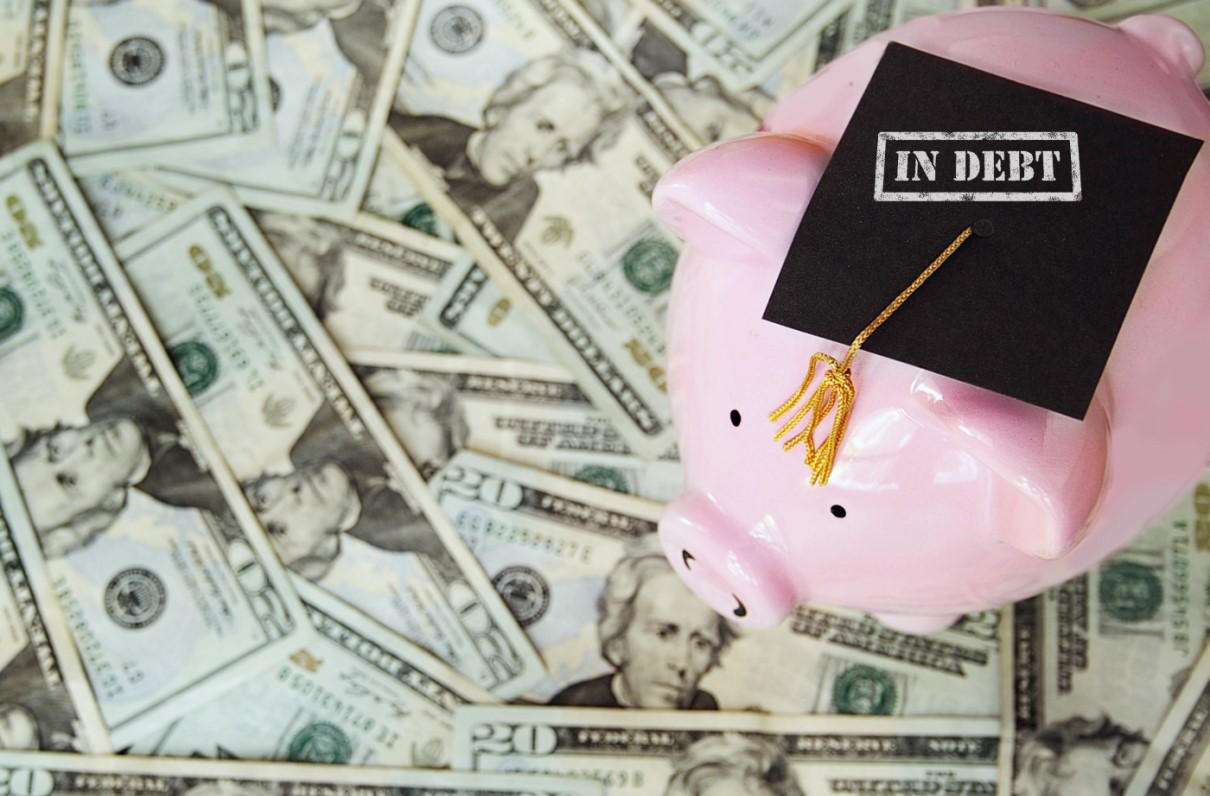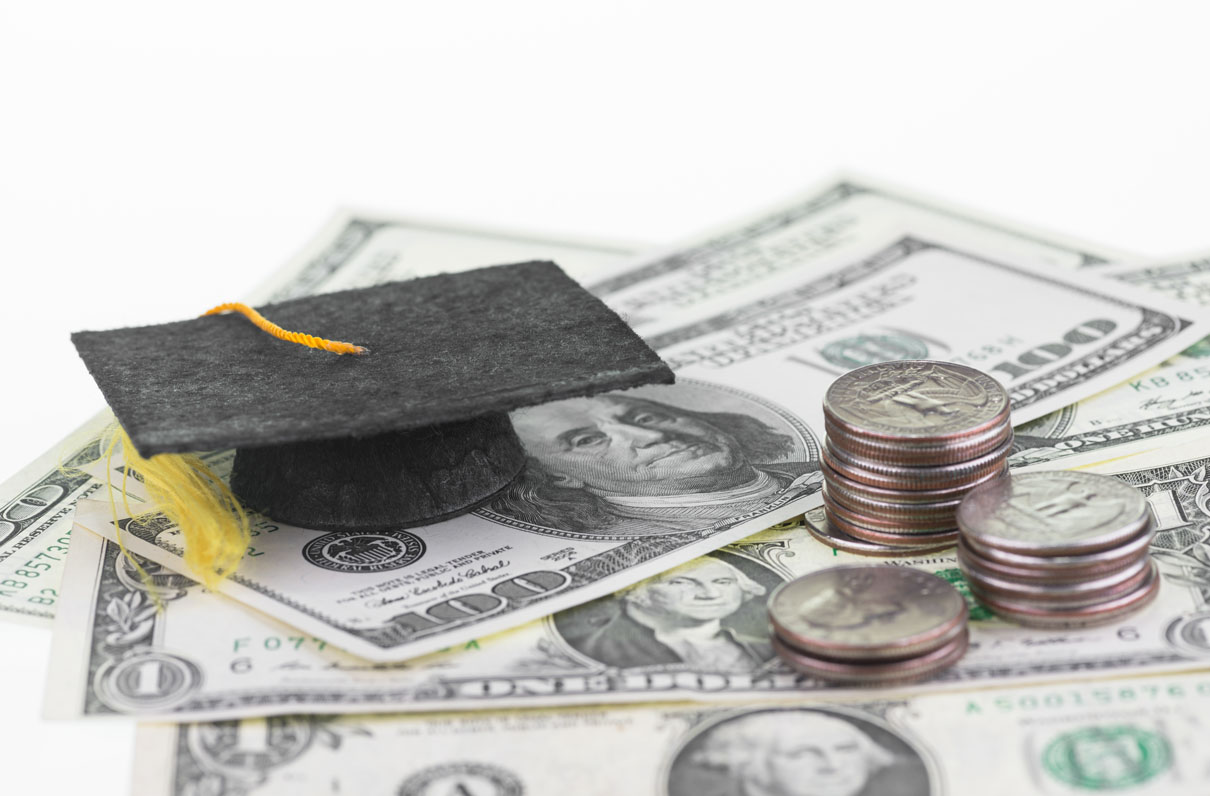By Col. William P. Jensen, USAF (Ret), CFP® candidate
(Note: Individual situations can vary. This information is not intended to be a substitute for specific individualized tax, legal, or investment planning advice. Discuss your specific tax issues with a qualified tax professional.)
For young people at the beginning stages of their professional lives, student loan debt can be overwhelming. With almost 44 million people currently making student loan payments each month, debt forgiveness can be a potentially attractive option for many. However, the debt forgiveness landscape can be complicated. Here is an overview of available options.
Federal Programs
The Public Service Loan Forgiveness (PSLF) Program is a relatively new opportunity that allows public servants to have their debt discharged after making 120 monthly payments. Introduced in 2017, eligibility requirements include full-time employment in a public-service position for a federal, state, or local government employer. Employees of certain nonprofit 501(c)3 organizations also might qualify.
However, this program requires the student loan debt be a Federal Direct Loan with an income-driven repayment plan. Lastly, the applicant needs to have established a long history of consistent payments, totaling 120 on-time payments. This is potentially upwards of 10 years of payments already made toward the total debt.
These rules are quite specific, and the implementation has been strict. However, Congress in 2018 authorized a temporary expansion to PSLF that allowed borrowers who held certain nonqualifying repayment plans to apply. Again, this plan has rigorous criteria, but it can be a significant help to those who qualify.
[Learn About the MOAA Scholarship Fund]
State and Local Programs
Given the transitory nature of serving in the military, state and local programs easily are overlooked. It helps to check with your home state or current state of assignment to see whether you qualify for any debt-forgiveness programs. Typically, these types of programs take two forms: Employment in a specific occupation or in certain geographic regions (or both). Again, given the nomadic military lifestyle and that military personnel easily represent all 50 states, a convenient source for information is The Institute of Student Loan Advisors, which has compiled a comprehensive list of “below federal”-level forgiveness programs.
Careful and current research is required, as these programs constantly are changing. Sometimes, these programs may be combined with the PSLF program noted above for added debt reduction.
Perkins Loan Cancellation
Public servants might find the Perkins Loan cancellation program to be very beneficial when seeking student loan forgiveness. Public service professionals such as nurses, public defenders, and firefighters, among others, might be good candidates for the Perkins Loan debt cancellation program. These loans are federally sponsored, need-based loans for undergraduate and graduate students.
In a kind of play-to-pay system, a percentage of the loan is forgiven for each year of service, with full repayment of the loan occurring after seven years. In 2017, Congress barred schools from providing new Perkins Loans to college students, but loans administered prior to this ban might still be eligible for debt cancellation.
[RELATED: College Financing Advice Via MOAA's Caregiver Portal]
Teacher Loan Forgiveness
Teachers employed by qualifying schools for at least five consecutive years might be able to receive payments against their federal loans (up to $17,500). Qualifying schools tend to be located in areas serving low-income students, and acceptance into the program is dependent upon the academic subject that is taught.
Note this cannot be used in conjunction with the PSLF, so careful research is required to select the best option for your situation. For example, the PSLF tends to provide better benefits, but the teacher loan forgiveness requires a shorter time commitment.
Income-Related Repayment Forgiveness
On the surface, the income-driven repayment/forgiveness model sounds appealing: Your payment of federal loans is governed by how much you can afford to repay, based on your current salary. As a nice bonus, after 20 or 25 years (depending on the program you choose) of payments, your debt will be canceled. Unlike some of the previous options, public service employment is not a criterion for this program.
However, one caution: Currently, debt relief is viewed as “income,” which is a taxable event. Proper tax planning with your financial advisor is required to avoid any unfortunate surprises come tax time.
Consult an Expert
Student loan debt reduction programs can dramatically improve your financial situation, but the strategy you choose needs to be carefully selected within the context of your full financial situation. Many of the programs have rigorous requirements that include filing annually to ensure each payment falls under the category of “qualified.” Not filing the correct forms annually or as your circumstances change could have a negative impact on your ability to work toward forgiveness of your student loan(s).
If you are or plan to work toward student loan forgiveness through one of the above-mentioned programs, it would be wise to work with a student loan expert alongside your loan provider to ensure you are checking all the administrative boxes necessary to stay enrolled in the program. It might also be helpful to develop a comprehensive personalized plan with the assistance of a financial planning expert who can coordinate and manage all your goals, loans, potential tax issues, and timeline.
Col. William P. Jensen, USAF (Ret), is a Certified Financial Planner (Candidate) with Hughes Financial Services, LLC. in Herndon, Va. He is a Life Member of MOAA.



